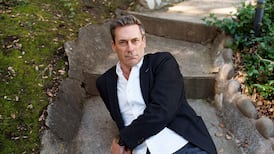During its broadcast of his second fight with Ken Norton in 1973, ABC introduced a special in-picture feature that allowed viewers to watch Bundini Brown working Muhammad Ali's corner. In the bottom left of the screen, they saw him run through the full panoply of his antic repertoire throughout the contest. A stream of consciousness, equal parts cajoling, cheerleading and caterwauling, he jabbed and feigned, bobbed and wove at ringside, all the while delivering a steady line in patter designed to inspire his boss.
“I give the champ all my strength,” said Brown. “He throw a punch, I throw a punch. He get it, it hurt me. I can’t explain it but sometimes I know what he’s gonna do before he even knows it.”
His official title was cornerman. His place in history is as the most famous carnival barker in all of sport. The illiterate son of an alligator hunter from the Florida swamplands, he coined “Float like a butterfly, sting like a bee”. No more enduring couplet from any arena. For the most important fights in the most significant fistic career, he was on Ali’s shoulder, a constant in his ear, providing the freeform soundtrack to so many weigh-ins and epic encounters. “Rumble, young man, rumble!” Another timeless improvisation from his back catalogue.
A few years back. ESPN made a documentary contending that Ali might just have been the first rapper and somehow neglected to mention Bundini's crucial role as his muse and collaborator over 18 years. A grievous oversight. The court jester-cum-poet laureate excised from that narrative has now been rescued from the margins of history by an excellent, new book. In "Bundini - Don't Believe the Hype", Dr Todd Snyder revisits Brown's role, putting flesh on the bones of his legend, offering a warts and all, three-dimensional portrait of the man behind so much of the doggerel central to the Ali mythology.
Ali mystique
"Bundini just keeps you going," said Dr Ferdie Pacheo, Ali's physician for the glory years. "He keeps your blood hot. He's invaluable in the corner as a cheerleader. He was a big part of the Ali circus, the Ali mystique."
At 13, Drew Brown lied about his age to join the US Navy and served in the Pacific Ocean theatre during World War II. Discharged for shoving a racist officer overboard, he came home from sea with the nickname Bundini. That strange moniker, given to him by a bunch of giggling teenage girls on a dock in India, gained fame the world over through boxing despite the fact he didn't have an athletic bone in his body.
As recounted in fascinating, entertaining detail by Snyder, his story is full of these types of contradictions. The confidant of the world's most famous and, for the time period, radical Muslim was married to Rhoda Palestine, a Jew from Brooklyn. Bundini's devotion to Ali was absolute yet he was one of the few willing to call his boss out when he spewed his "all white people are devils" schtick. He refused to join the Nation of Islam because he worshipped a deity called "Shorty" yet carried a tiny picture of Elijah Muhammad to remind a flagging Ali in between rounds of his religious purpose.
When Brown fetched up in a thriving Harlem after the war, his ability as a smooth talking street hustler earned him instant notoriety. Fast Black. The Black Prince. Some of the names he was also known by before he ended up as a gofer in Sugar Ray Robinson's sizable entourage. That role led to an introduction to the up and comer still then known as Cassius Clay and, by the time of the first Sonny Liston clash, Bundini was in the future heavyweight champion's corner, usually racing Angelo Dundee, the actual trainer, to be first into the ring to tend the fighter at the bell.
Exiled
The start of a beautiful friendship and a tumultuous relationship. Few people were closer to Ali over the next two decades yet nobody was fired by him more often. Profligate with money and fighting a lifelong battle with alcohol and other demons, Bundini was exiled from the inner sanctum multiple times. To his credit, Snyder doesn’t shy away from telling the story of him once selling the stones from one of Ali’s heavyweight championship belts. No matter the misdemeanour, he was always brought back into the fold because Ali seemed to thrive off his energy, to be moved by his incantations.
"The king is going home to get his throne," shouted Bundini when they arrived in Zaire for the Rumble in the Jungle. "From the root to the fruit!"
He parlayed his own celebrity into "Bundini's World", a Manhattan bar that, for a time in the late sixties, counted the likes of Norman Mailer and Sam Cooke among its regulars. Hollywood called too and he had speaking roles in several productions, most notably, the original Shaft and The Color Purple, where he worked with Steven Spielberg. But, his star inevitably waned as Ali's own career petered out, the more mortal he looked in the ring, the more ridiculous any Bundini braggadocio sounded.
One week before Bundini died in 1987, Ali visited him in a Los Angeles hospital. He could no longer speak but, before leaving, his old boss leaned over and whispered in his ear, “Float like a butterfly, sting like a bee . . . rumble, young man, rumble.”
The gospel according to Bundini.
















